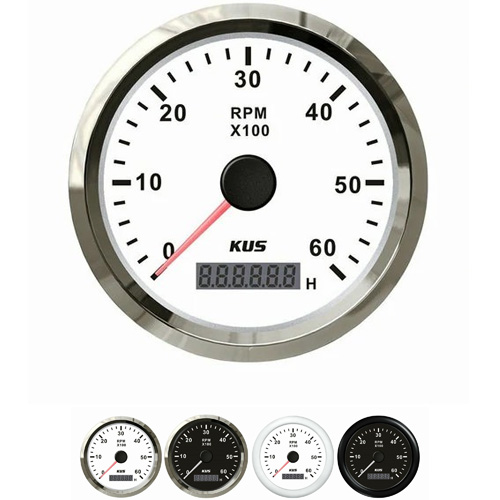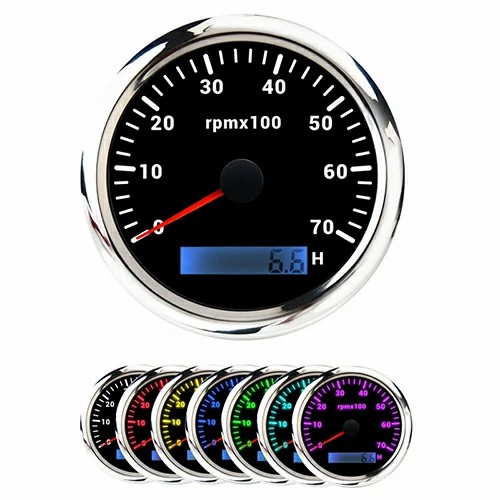optical rpm sensor tachometer
Opetical RPM tachometer sensor is a kind of angular displacement sensor, which is composed of a disc with gap installed on the measured shaft, a light source, photoelectric devices and an indicating gap disc. With the advantages of non-contact, high precision, high resolution, high reliability and fast response, it has been widely used in the field of detection and control. The application of photoelectric sensor in industry can be summarized into three basic forms: direct type, reflective type and projection type.
In electronically controlled diesel engine, speed is not only a simple working parameter of engine, but also the basis for calculating other parameters of electronic control system and the benchmark for controlling injection timing. The speed signal is measured by the speed sensor. If the sensor cannot work stably, the electronic control system will not be able to correctly control the normal operation of the engine. Therefore, the performance of the sensor is directly related to the performance of the electronic control system. There are many types of speed sensors. Because the photoelectric sensor has the advantages of good linearity, high resolution, low noise and high precision, we choose the photoelectric speed sensor to detect the speed.
Photoelectric speed detector is an electronic device that senses the change of light intensity according to the working principle of photodiode. When the light emitted by it's reflected or blocked by the target, the receiver senses the corresponding electrical signal. It includes modulated light source, optic system composed of photosensitive rudiments, amplifier, switch or analog affair device. The photoelectric detector is composed of an independent and fairly placed light transmitter and a light receiver. When the EI mark passes between the light emitter and the light receiver and blocks the light, the detector labors a signal. It's the most dependable discovery device. The niche (U-shaped) photoelectric switch is a distortion of the contrary type, and its advantage is that there's no need to acclimate the optic axis.
The engine speed of diesel engine is mostly induced by magnetic pulse or magnetic winding. 1. Magnetic pulse induction mode: (the following example shows the sensor of Isuzu 4hk1 series engine). Function: the speed sensor collects the speed signal of the diesel engine so that the ECU can calculate the circulating fuel supply, and can also provide the crankshaft position signal so that the ECU can accurately control the fuel injection timing; The auxiliary speed sensor is used as the speed signal to calculate the signal of crankshaft angle and judge the cylinder. Installation position: on flywheel housing and supply pump. 2. Magnetic winding mode: function of camshaft position sensor: each revolution of camshaft provides a signal to ECU, which determines that the piston of that cylinder is at the top dead center of compression stroke. Installation position: at the front end of camshaft.
 English
English 



Get a Quote / Info